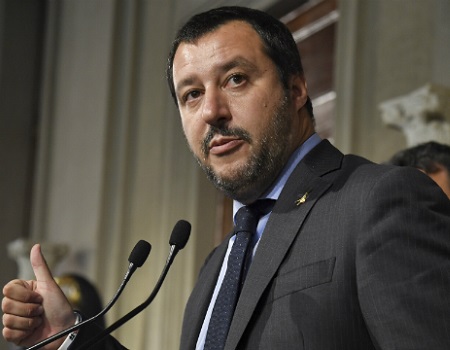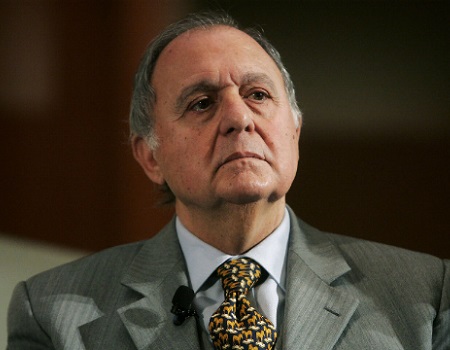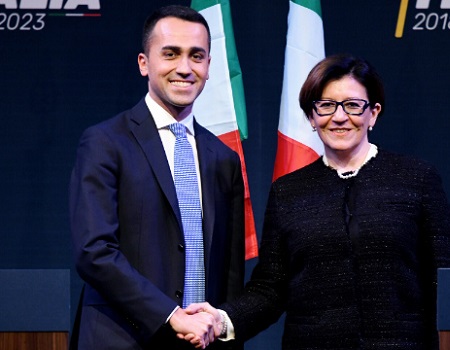
ITALY’S new government, with Giuseppe Conte as prime minister, was sworn in Friday bringing to an end three months of political deadlock that began with an inconclusive election on March 4.
The ceremony brought long sought-after stability to the country following months of political drama that had worried financial markets and Italy’s EU partners.
Just days ago fresh elections had seemed inevitable but on Thursday, President Sergio Mattarella named political novice Conte as prime minister for the second time in less than a fortnight and approved his revised government forged by the nationalist League and anti-establishment Five Star Movement.
The new coalition plans to reject austerity and to increase spending, and it also wants to renegotiate EU treaties and review the bloc’s economic governance.
Its ambitious economic proposals – which include a monthly basic income for Italy’s poorest and a two-tier “flat” tax – have worried Brussels and financial markets have given Italy’s massive €2.3 trillion ($2.7 trillion) debt.
Here are brief profiles of the main ministers, with the rest of the cabinet names given at the bottom.
Economy minister
Giovanni Tria, 69, is a little-known economics professor at Rome’s Tor Vergata University. He was picked for the job after the coalition leaders’ previous choice, eurosceptic economist Paolo Savona, was vetoed by the head of state.
In recent articles, Tria has called for a change in the EU’s fiscal rules to allow public investment to help grow and, like many mainstream economists, he has criticised Germany’s persistently large current account surplus.

Interior minister and deputy PM
Interior minister and deputy PM Matteo Salvini is the 45-year-old leader of the far-right League party, the second-largest party in parliament and in the governing coalition.
Salvini has claimed the ministry that spearheads migration management to show the League’s priority remains to clamp down on illegal immigration.
Salvini transformed the League from a northern regional bloc that demanded tax money not be funnelled to the country’s underdeveloped south into a far-right nationalist party whose Donald Trump-like “Italians First” slogan resonated with voters after years of anaemic growth and mass migration.
Labour minister and deputy PM
Labour and industry minister and the other deputy PM Luigi Di Maio, 31, is the leader of the anti-establishment 5-Star Movement. Spearheading a new “super-ministry” combining the labour and industry portfolios, Di Maio will have the job of implementing 5-Star’s flagship policy of a guaranteed income for the poor of up to €780 per month.
Di Maio has no government experience, but proved an able campaigner and has kept up the party’s popularity during the long and tortuous negotiations to form a government.
Foreign minister
Enzo Moavero Milanesi, 63, worked for 20 years at the European Commission before becoming European Affairs minister in the governments of Mario Monti (2011-2013) and Enrico Letta (2013-2014).
This will make him one of the few ministers with deep institutional experience, especially in Brussels.

Europe minister
Paolo Savona, an 81-year-old economist, was rejected as an economy minister by the president on Sunday because of his criticism of the euro single currency, throwing into disarray the coalition’s first attempts to form a government.
Instead of the economy post, Savona will become Italy’s representative in Brussels, a lower-profile position, but an important one for a government that wants to change European Union rules.
In his latest book, Savona described Italy’s entry into the single currency as a “historic error” and called for a “plan B” to be drawn up to allow it to leave the bloc with as little damage as possible if it should prove necessary.
Justice
Alfonso Bonafede, 41, is a Sicilian-born lawyer close to both Di Maio and Conte, of whom he is a former student and assistant. He has been an M5S MP since 2013.
Defence
Elisabetta Trenta, 50, is a specialist in defence and security issues who has been on military missions in Iraq (2006-2007) and Lebanon (2009).

Undersecretary to PM
Giancarlo Giorgetti, 51, is a long-time League lawmaker who has always played a behind-the-scenes role.
As undersecretary, he will have a hands-on role in running the everyday business of government, including preparing legislation and maintaining contacts with the various institutions and ministries.
Giorgetti is considered one of League leader Salvini’s top advisers. After the March vote, he was named the head of the party’s lawmakers in the lower house, a position he will have to cede now that he is entering the government.
Other ministers
The rest of the cabinet consists of Parliamentary Affairs & Direct Democracy, Riccardo Fraccaro (Parliamentary Affairs and Direct Democracy), Giulia Bongiorno (Public Administration), Erika Stefani (Regional Affairs), Barbara Lezzi (minister for the South), Lorenzo Fontana (Family and the Disabled), Gian Marco Centinaio (Agriculture), Danilo Toninelli (Infrastructure and Transport), Marco Bussetti (Education), Alberto Bonisoli (Culture), Giulia Grillo (Health), Sergio Costa (Environment).
(FRANCE 24 with REUTERS and AFP)



